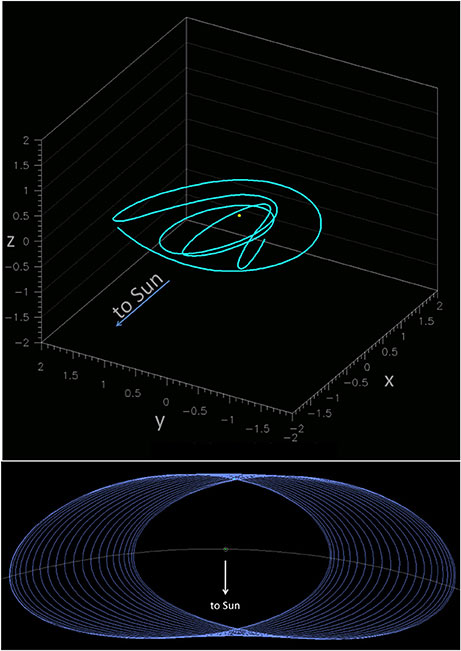
“Minimoons can provide interesting science and technology testbeds in near-Earth space. These asteroids are delivered towards Earth from the main asteroid belt between Mars and Jupiter via gravitational interactions with the Sun and planets in our solar system,” reports Dr. Robert Jedicke, lead author, based at the University of Hawaii, Honolulu, USA. “The challenge lies in finding these small objects, despite their close proximity.”
“At present, we don’t fully understand what asteroids are made of,” adds Dr. Mikael Granvik, the co-author, affiliated with both the Luleå University of Technology, Sweden, and the University of Helsinki, Finland. “Missions typically return only tiny amounts of material to Earth. Meteorites provide an indirect way of analyzing asteroids, but Earth’s atmosphere destroys weak materials when they pass through.
“Minimoons are perfect targets for bringing back significant chunks of asteroid material, shielded by a spacecraft, which could then be studied in detail back on Earth.”
Predicted to be up to 1-2 meters in size, mini-moons are temporarily gravitationally bound in the Earth-Moon system. They may just fly by the Earth or make at least one revolution around the planet, eventually escaping the gravitational tug of our planet or entering our atmosphere.
Reviewing the last ten years of mini-moon research, Jedicke and colleagues show that existing technology can only detect these small, fast-moving objects by chance.
“Minimoons are small, moving across the sky much faster than most asteroid surveys can detect,” explains Jedicke. “Only one minimoon has ever been discovered orbiting Earth, the relatively large object designated 2006 RH120, of a few meters in diameter.”
Currently, under construction and operational in a few years, LSST hopes to confirm the existence of mini-moons and help track their orbits around Earth. The review — part of a special article collection on the Earth-Moon neighborhood — highlights the opportunities that the detection of mini-moons will bring, capitalize on LSST’s capabilities once it begins operations.
“The LSST is the dream instrument for discovering tiny, fast-moving asteroids and we expect it will regularly discover temporarily-captured objects within the next five years,” reports Jedicke. “It has a gigantic mirror to collect light from faint objects and a camera with a tremendous field-of-view to cover the entire sky more than once a week.”
He continues, “Once we start finding minimoons at a greater rate they will be perfect targets for satellite missions. We can launch short and therefore cheaper missions, using them as testbeds for larger space missions and providing an opportunity for the fledgling asteroid mining industry to test their technology.”
“We don’t know whether small asteroids are monolithic blocks of rock, fragile sand piles, or something in between,” says Granvik. “Mini-moons that spend significant time in orbit around Earth allow us to study the density of these bodies and the forces that act within them, and therefore solve this mystery.”
Jedicke concludes by sharing his aspirations for these asteroids: “I hope that humans will someday venture into the solar system to explore the planets, asteroids, and comets — and I see minimoons as the first stepping stones on that voyage.”
Reference: “Earth’s Minimoons: Opportunities for Science and Technology” by Robert Jedicke, Bryce T. Bolin, William F. Bottke, Monique Chyba, Grigori Fedorets, Mikael Granvik, Lynne Jones and Hodei Urrutxua, 24 May 2018, Frontiers.
DOI: 10.3389/fspas.2018.00013
Never miss a breakthrough: Join the SciTechDaily newsletter.